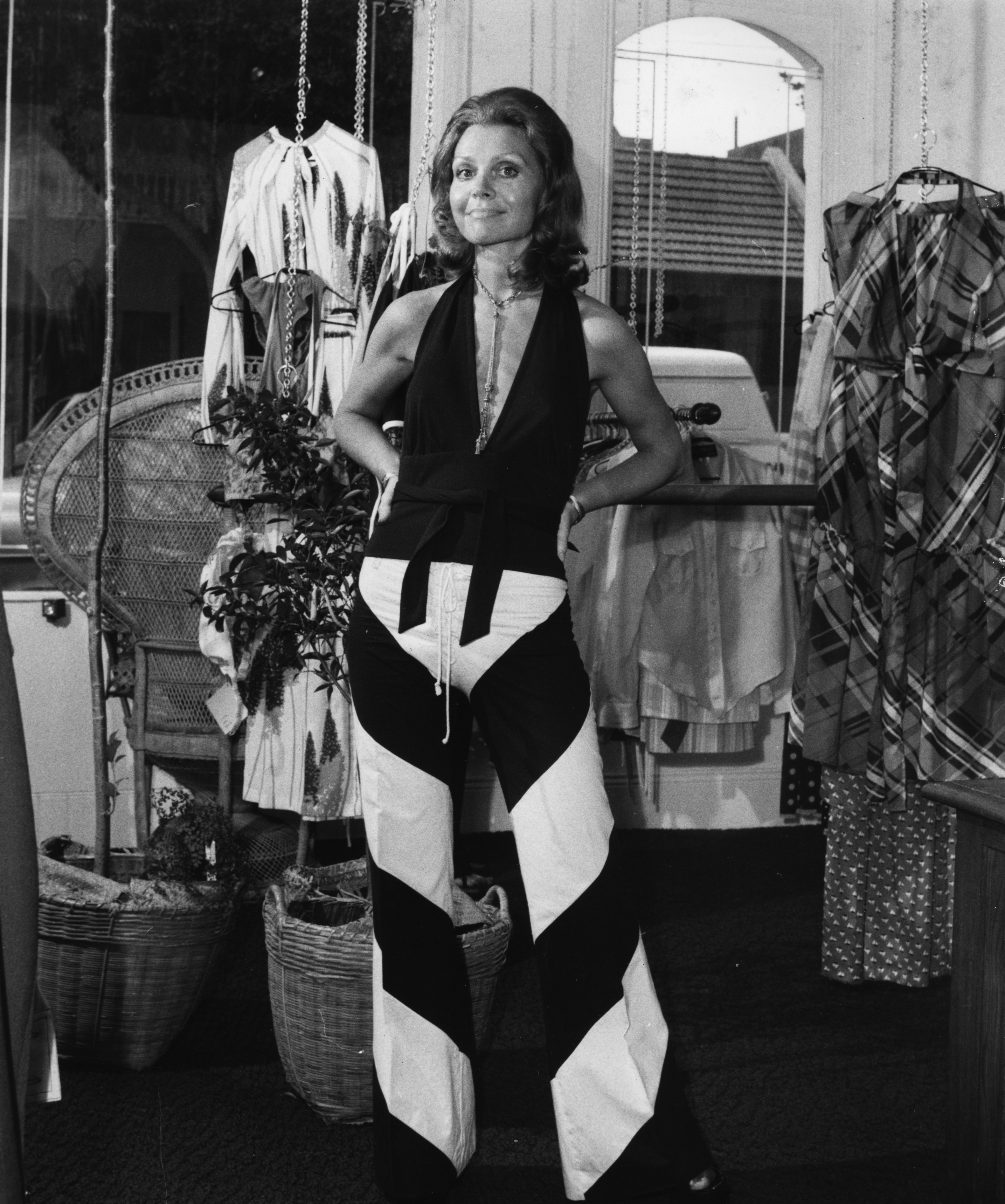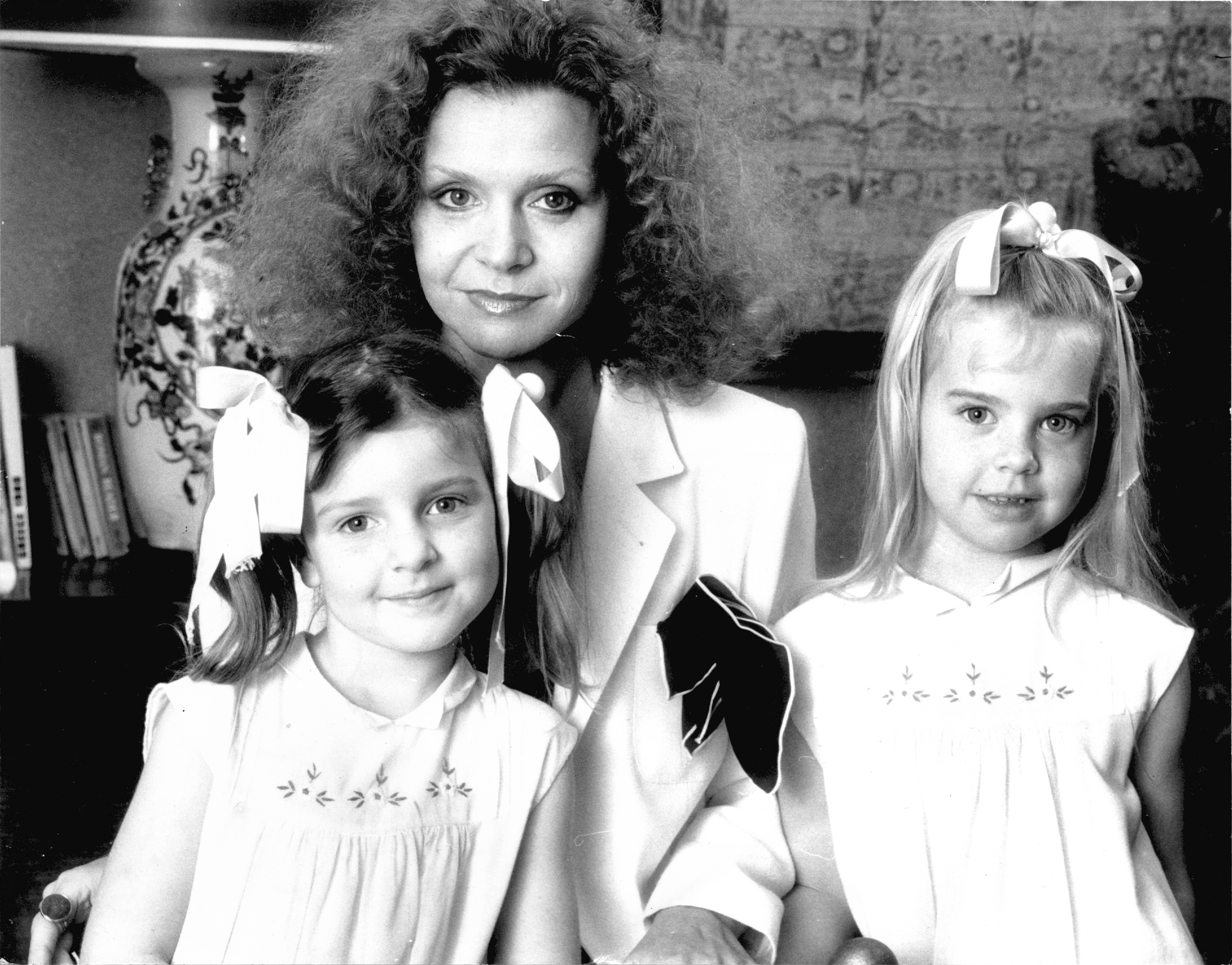She hides, or perhaps protects, her gaze behind square sunglasses.
She expresses herself yieldingly by weaving the threads of her past: the colours of the frescoes in the church in Lovero where she lived as a child, the voyage on the ship headed for Australia - “An inspiring adventure”, she emphasises - and her first steps as a young woman along the streets of Sydney, accompanied by a big dream.
She tenderly presses my hand and sits opposite me inside the Melbourne Recital Center.
In the 35 minutes she set aside for our interview, between an appearance on the radio and a flight back to Sydney, Carla Zampatti’s thoughts clearly unravelled behind my pelting questions, highlighting how her role also masks her socio-political expression.
“1965 was an exciting year, an extraordinary historical moment especially to start a career in the fashion industry,” she says.
“The youth movements that exist and militate today are honorable, but not as phenomenal as they were then.
“The women were so ambitious. I was ambitious. I was one of them. It was also so much fun.”
Carla Zampatti is one of the most prolific and astute fashion designers of today - she still tries on every garment she designs and spends hours poring over fabrics for her future collections.
She loves the transformative power of fashion and making women of all ages feel amazing, beautiful and powerful through impeccable design.
The image of a life expressed in colours and cut-outs was drawn in her head as a child, in a church in Lovero, in the northern Italian region of Lombardy.
“I knew I wanted to be in fashion since I was in Italy,” she says.
“We had a beautiful church with wonderful frescoes near our house,” she says.
“I was six years old and already used to daydream about the draping in the clothing of the Madonna and the saints.
“Some time later I went to a dressmaker with my mum and realised that I wanted to do something like that.
“And thanks to my mother’s example of being so strong and able to run a family business and raise three children solely on her own, I knew from the beginning that I had to have a career.
“And that aspiration stayed with me, right through.”
With her mother and her older brothers, Zampatti left Italy in 1952 at the age of nine in order to finally meet her father who had moved to Australia a few months before her birth during World War II.
“My father was not a fascist,” she says.
“He didn’t share the idea of that war - he wanted to protect his family and build a future for all of us.”
He left Lovero, a city shrouded in thick winter snow, in February in the early 1950s to undertake the long journey by ship, and arrived in Perth at the height of the very hot Australian summer.
“It was exciting, an adventure that still today I remember perfectly,” Zampatti says.
“The contrast of the seasons, the different colours of the earth and the sky.
“I was extraordinarily enthusiastic. It was a magical voyage.”
The family settled in Fremantle in Western Australia, while Zampatti continued to develop a well-defined vision of her future.
After completing her studies, she immediately decided to move to Sydney.
She wanted to free herself from the image of the woman who marries a man, has children and dedicates her days to take care of the home.
Her perspective was quite different, and her dream was throbbing relentlessly in the corners of her mind.
“My father was impossible, ours was a battle of wits,” Zampatti says.
“As you can imagine, when I told him I didn’t want to get married until at least the age of 25, he asked me, ‘What do you mean? Are you going out with boys?’ and I replied, ‘Why not?’.
“Even after my first successes, I don’t think he ever understood.
“Instead, my mother comprehended my ideas immediately.
“In general, daughters do a lot to change their father’s mentality.”
Carla Zampatti's first collection in 1965
Surrounded by the energy of Sydney, in the early 1960s, Zampatti gave life to her idea of design and style, first cutting her teeth with an apprenticeship and then moving on to her own personal creations.
Since 1965, the world we live in has undergone profound and radical changes.
Liberation started with women’s rights movements in order to seize their coveted independence, at home, at work and on the streets.
At all times Carla was there - she dreamed and produced a new image of the Australian woman, a woman who finally managed to be whoever she wanted to be.
Her first collection - in green velvet, long tunics, trapeze dresses and jumpsuits - was launched with a photo shoot in front of the iconic Sydney Opera House, at that time still under construction.
Shortly thereafter she opened her first boutique in Surry Hills.
Today, after 55 extraordinary years, her brand is still one of the most reliable in Australian fashion and one to which she continues to skillfully dedicate herself every day.
That credibility has in turn allowed her to overcome even four frightening financial crises, whilst still continuing to collect international awards - Member of the Order of Australia in 1987, Commander of the Order of Merit of the Italian Republic in 2004, and Australian Fashion Laureate in 2008, among many others - as well as the honour of becoming the first woman to have designed a car (the ‘Ford Laser Carla Zampatti’, created in partnership with Ford Australia, was launched in 1985).
“Today, men feel a bit overwhelmed by women,” Zampatti says.
“They were trying to keep the movement back, but they can’t because women do not only want to look after their children.
“The biggest change is that women know that they can do anything they apply for.
“They have a lot of choices - they can run events, work in mines and build companies, and there’s no limit.
“Women are much more confident and they would like to keep on doing more.
“I think young men need to understand that women will not sit back and just do the housework.
“I observed my two daughters with their husbands.
“Bianca’s husband looks after their children, possibly more than her because she is very busy with her own fashion brand.
“And Allegra has a husband who travels a lot but he also looks after their kids quite a lot.
“So they share the duties.
“It’s not just the woman doing everything, which is wonderful.
“This allows women to go where they want to go and to be in every area they want to be in.”
Carla Zampatti with her daughters, Bianca and Allegra
And while the transition of management of her company is underway, it will soon pass into the hands of her eldest son Alex.
“When you’re a child, your mother tells you what to do,” Zampatti says.
“And when you grow up, you don’t want her to tell you what to do.
“That’s exactly what the issue is.”
Zampatti looks back, proud of her children and of the realisation of that dream that was cast into her world in that sumptuously decorated Italian church.
“I’m proud of what I’ve done - it’s my evolution as a woman and designer,” she says.
“I think I’ll keep working as long as I can.
“I don’t know what will happen in two or three years - maybe I’ll retire and probably go mad!
“I would like to find a designer that I really respect.
“That’s my challenge.
“I think there are talented Australian fashion designers and if I get hit by a bus tomorrow and I have to surrender my job, I think there are a half a dozen names that could take my place.
“Meanwhile, I still nurture the memory of when I first saw my creations in a shop window and my first collection in a department store.
“As well as the memory of holding my children, bringing life into this world. There’s nothing like it. It’s worth the pain. It’s human.”














